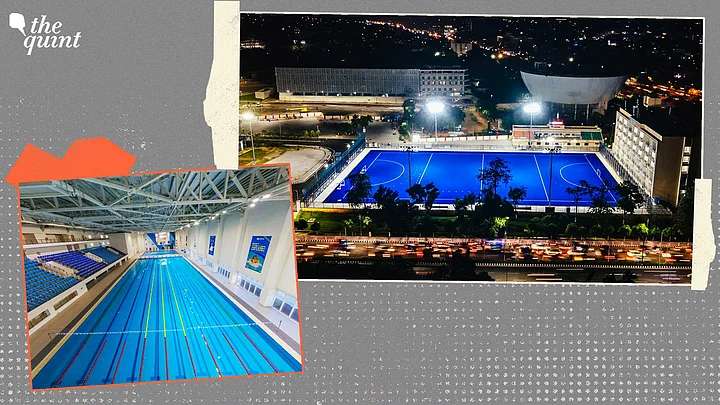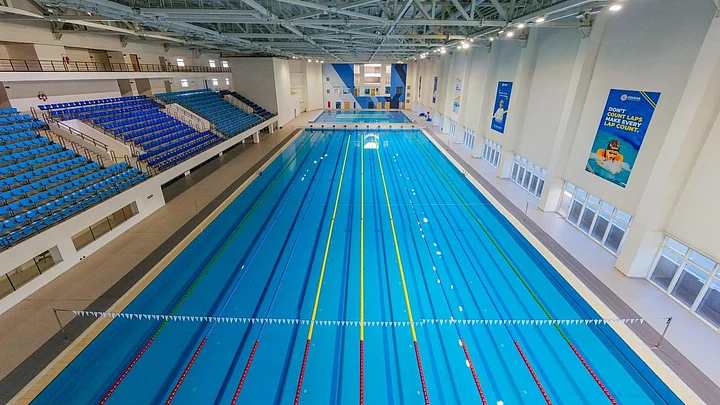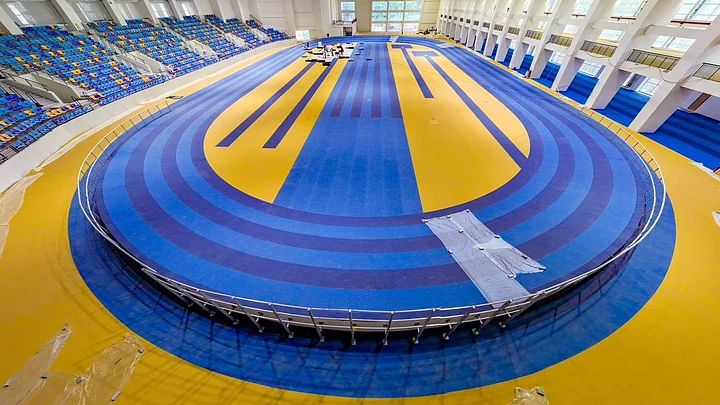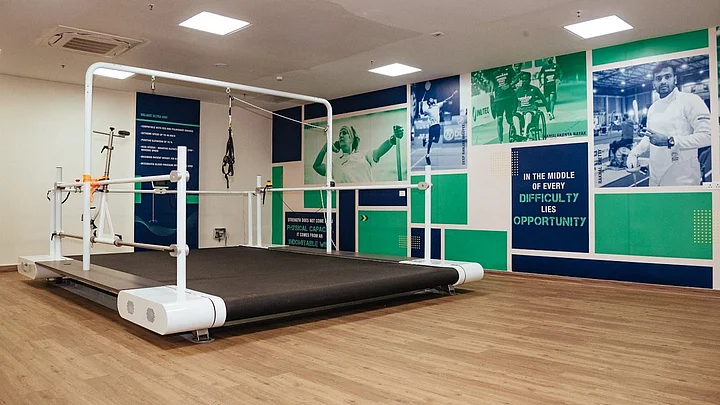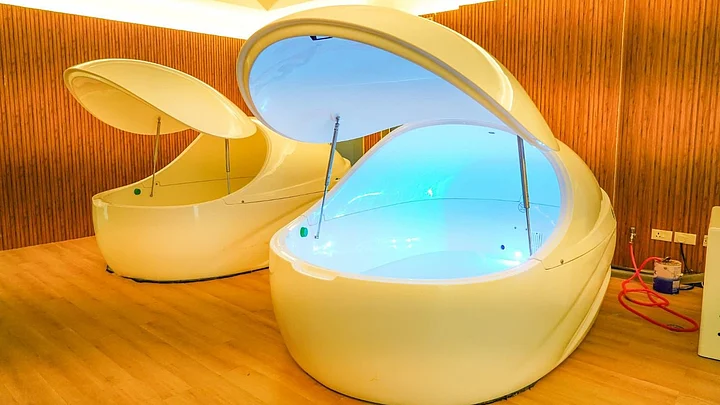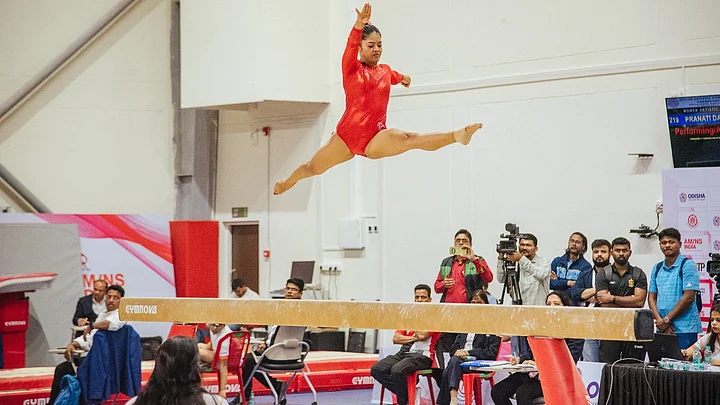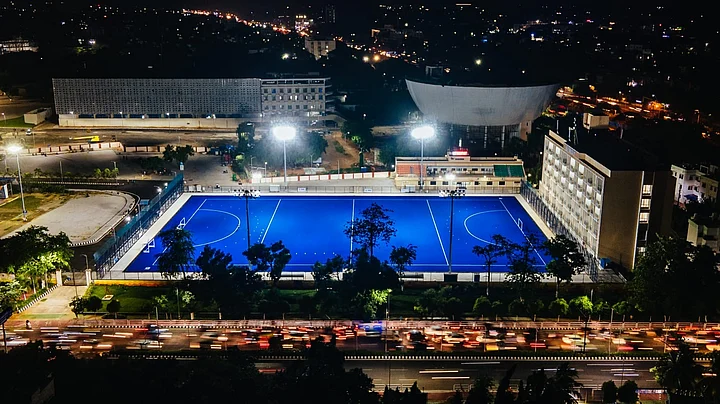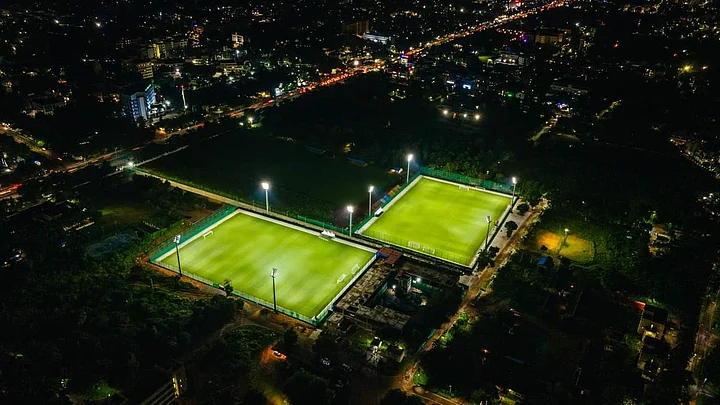Prologue – The Three Ladies of Kalinga Stadium
The buzz of anticipation filled the air. In only a few hours, fans will flock to the eatery. Before that, the Sahu trio – Sugata, Bharati and Tunilata – found themselves completely immersed in the calm, watching the Indian men’s hockey team preparing for a high-stakes FIH Pro League clash against the world number one, Australia.
The Sahus – running a food outlet called ‘Millet Shakti’ inside Bhubaneswar’s Kalinga Stadium – know a thing or two about hockey now, having caught glimpses of the game over the past decade. Yet, in 2013, when they saw a vacancy advertisement for the eatery in a local newspaper, all they knew was that whatever their husbands earned from small businesses was insufficient to make ends meet.
“Eleven years ago, our families were entirely dependent on whatever our husbands earned. Most times, it was Rs 3000. If we were lucky, it would be Rs 4000. That was never enough to sustain a family. Now, thanks to this job, we get around Rs 20000 a month. Our husbands are also very proud of us. In a way, our lives completely changed after 2013,” Sugata says.
The Sahus stand as a testament to how many found a new lease of life in 2013, when the government of Odisha decided to invest significantly in sports. The Quint embarked on a journey to the heartland of the juggernaut, aiming to find how India’s ‘Best Kept Secret’ – as the state proclaims to be – has transformed into a state that is vying to be the nation’s sporting capital.
Here’s what we found out:
Chapter 1 – How It All Started
19 November 2013. Odisha's chief minister, Naveen Patnaik had just announced the formation of a new hockey team – Kalinga Lancers – who would compete in the second edition of the Hockey India League. The league would only run for a few years, but the decision would act as the catalyst for a sequence of transformative events, setting off a chain reaction. Domino effect.
Odisha-based sprinter, Amiya Mallick recollects:
Odisha's sporting revolution started in 2014, through the Hockey India League team – Kalinga Lancers. It was a massive hit among the crowd. The stadium was going housefull, fans were willing to pay twice the actual amount to get a ticket. No one expected that sort of craze for a hockey league. Hockey was popular in places like Sundargarh and Rourkela, but not Bhubaneswar. The government was initially sceptical, but because of the overwhelming response from the fans, they got the confidence to invest in sports and sporting infrastructure.Amiya Mallick, Odisha athlete
Ranjit Parida, joint secretary of sports for the government of Odisha, echoes similar sentiments.
The drive started a decade ago. In 2013, Odisha formed a team in the Hockey India League, called the Kalinga Lancers. That’s how the hockey craze began.Ranjit Parida, Joint Secretary of Sports, Government of Odisha
Chapter 2 – The 90-Day Challenge
In the initial years, the growth trajectory was gradual, marked by steady progress. Until, in 2017, Odisha decided to host the Asian Athletics Championships, following Jharkhand’s withdrawal.
The only problem? They had only 90 days to prepare.
A crucial event happened in 2017, which we call the 90-day challenge. The Asian Athletics Championship was supposed to be held in Ranchi, but the government of Jharkhand pulled out at the last moment. We had exactly 90 days to prepare for the tournament. It was a very big event, with 84 participating nations. The challenge was enormous, but we executed it successfully. The success of that competition gave us the confidence to continue our work in sports.Ranjit Parida
Chapter 3 – Youth Development Through Sports
"Sports for youth, youth for future," read a banner at the Biju Patnaik International Airport. The same phrase can be found at numerous other places in the state. We are being told that it aligns government's sporting strategies.
The Athletics Championships was a peripheral event. If you want to know about the core reason behind investing heavily in sports, it is be youth development. India is a youthful nation and the government made it clear that to invest in youth, nothing can be a better option than investing in sports, because sports motivate the youth to channelize their energies in a better way. We have never been a sporting nation. Academics always ruled the roost. So, the government wanted to inculcate a sporting culture.Ranjit Parida
Chapter 4 – Infrastructure
And hence it was decided that for India to be a sporting nation, a sporting culture must be instilled among the youth.
How? Through infrastructural development, says Ranjit.
To inculcate sporting culture, good infrastructure is a must-have, so we decided to plunge into that aspect. Kalinga Stadium is a testimony to the endeavors taken by the government of Odisha, but it's not the only thing. If you go to the hinterlands, you’ll find that we have got 90 indoor stadiums lined up to be inaugurated in the next couple of weeks. Even if only 2 to 3% of the athletes are making the cut at the national level, the rest can still hugely benefit from the sporting culture.Ranjit Parida
Amiya offers his elaboration:
After successfully hosting global events, the government decided to categorise sports and invest heavily on their infrastructure. So sports like hockey, athletics and weightlifting was bracketed in category ‘A’, that is, of the highest importance. The next step was to build world-class infrastructure and bring support staff, to help athletes from these categories improve.Amiya Mallick
Anuradha Biswal, who became Odisha’s first female athlete to represent the nation in the Olympics, reminisces the challenges she faced during her journey.
When I went to the Olympics, back in 2000, the state barely had any sporting facilities available. But there has been a large-scale revolution since the last decade. Infrastructure improved massively, and we hosted so many events successfully. I think it will be totally fair to say that when it comes to sports, Odisha is showing the path path to every other Indian state.Anuradha Biswal, former athlete from Odisha
- 01/08
Swimming HPC
(Photo: Sourced by The Quint)

- 02/08
Tennis HPC
(Photo: Sourced by The Quint)

- 03/08
Indoor Athletics Stadium
(Photo: Sourced by The Quint)

- 04/08
A treadmill for the para athletes, at the Sports Science Centre.
(Photo: Sourced by The Quint)

- 05/08
DreamPod – A rehabilitation and recovery equipment at the Sports Science Centre.
(Photo: Sourced by The Quint)

- 06/08
Action ongoing at the Gymnastics HPC.
(Photo: Sourced by The Quint)

- 07/08
Hockey HPC.
(Photo: Sourced by The Quint)

- 08/08
Football pitches, inside the Kalinga Sports Complex.
(Photo: Sourced by The Quint)

Chapter 5 – Corporatisation
Corporates and governments have had a love-hate relationship across states and nations, teetering between cooperation and conflict, Inseparable, yet never quite boon companions.
In Odisha, however, the government has opted to form partnerships with conglomerates in nearly every aspect. The HPCs – from athletics and swimming to archery and weightlifting – are all being run in association with corporate entities.
Parida explains the rationale:
In 2018, the government wanted to approach professional coaches from the highest level, but the biggest problem was in hiring them. We can't hire at will, because the government has rules to abide by, with respect to pay scale, recruitment guidelines and other things. So, we thought of roping in private bodies, who would offer us the flexibility of hiring. The government can't hire the best of the coaches because we are bound by the salary bracket of Rs 80,000 to Rs 1 lakh. But a BJ Kariapa, who is a very celebrated hockey coach, or a Douglas Eager, who has come all the way from South Africa to be the chief coach of swimming, or a Martin Owens, who has come from England to teach athletics, will not fit into this bracket. So, we thought of synergising a public-private relationship.Ranjit Parida
Chapter 6 – Beyond Sports
Despite optimism – which is found aplenty in this part of the country – stakeholders of the Odisha sports fraternity know only a few of the thousands they are investing on will bring international glory for the nation. That, however, does not deter investments, as sports is also seen as a tool of tourism boost.
Amiya elaborates:
Odisha is not among India’s most popular states, and we know that. But now that so many sporting events are happening, fans from all over the world are coming to Odisha. In a way, sports is triggering a tourism and cultural boost for Odisha. I’ll give you an example – a few weeks ago, we had an event called ‘Bhasha Hi Bhavishyat.’ It is a government initiative to promulgate our Odia language. Because that campaign coincided with the FIH Pro League, so many foreigners from various nations joined us in the campaign.Amiya Mallick
Ranjit adds:
From the sporting landscape’s perspective, we have built a very respectable image for Odisha in the pan Indian level. It feels good that people are recognising us as a sporting hub, the sporting fraternity across the country recognizes the contribution of Odisha.Ranjit Parida
Epilogue – The Olympics Dream
In Odisha, the sporting revolution commenced eleven years ago. Eleven years further down the line, India might – with added emphasis on 'might' – be preparing to host its maiden Olympics.
Can Odisha be a venue? One can only hope, says Ranjit.
We have built infrastructure which can host events of the Olympics scale. Although I would admit that hosting the Olympics is a far-fetched dream, to be honest. We always are keen to do our bit if India should host 2036. We have a long way to travel, but we will work on it.
And hope she will, confirms Anuradha.
I don’t see why we can’t host the Olympics. We have every facility that we need, we call Odisha the sports capital of India for a reason. From infrastructure to coaching staff, we are leading the way. Our plan for 2036 has already started.
Should Odisha host sport's grandest competition in 2036, we might check for an update on the Sahus.
